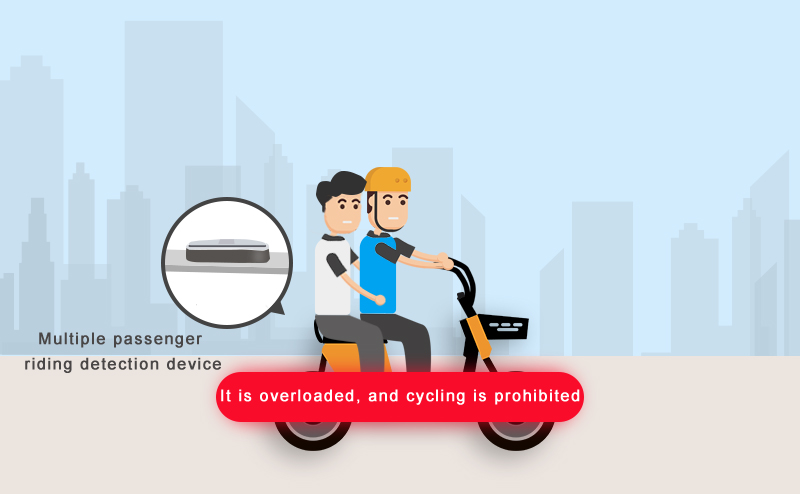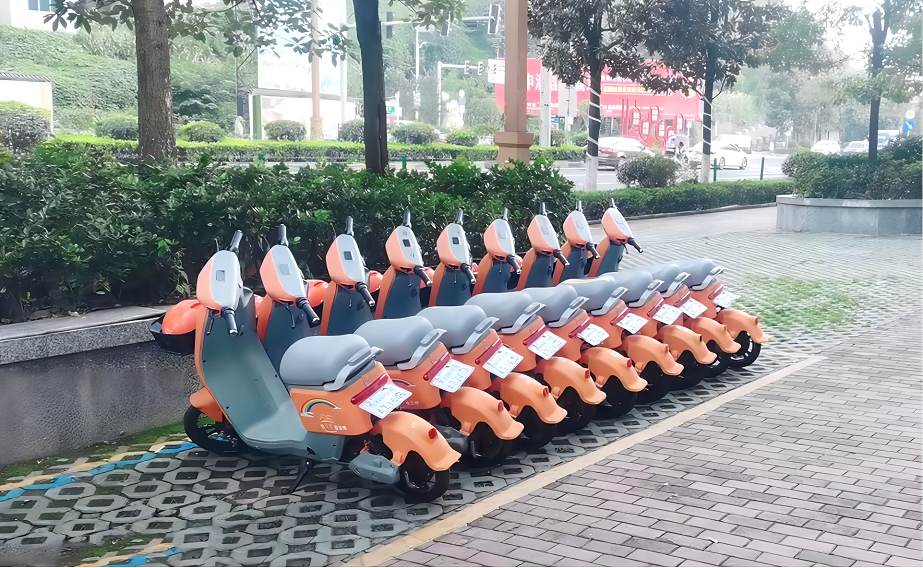Shared electric bikes’ problem of overloading has always been a concerning issue. Overloading not only negatively affects the performance and safety of electric bikes but also poses risks to passengers during travel, impacts brand reputation, and increases the burden on urban management.
Shared electric bikes are meant for sharing, not carrying multiple passengers, and this poses significant dangers. To effectively address this issue, in the past, common methods included education and awareness campaigns, road control measures, and joint enforcement by law enforcement agencies. However, with technological advancements, the industry now has more possibilities, enabling the management of shared electric bikes to transition from “manual” to “technological” control. For instance, the development of intelligent sensing technology has introduced a novel solution for managing overloading on shared electric bikes.
This achievement is made possible by the Multiple Passenger Riding Detection Device ZR-100. The device is primarily installed on the rear railing of shared electric bikes and is designed to monitor multiple passenger riding behavior in real-time and transmit relevant information to the central control system. Based on pressure sensing technology, this device accurately detects changes in vehicle weight, allowing it to identify instances of multiple passengers riding on the scooter. When multiple passengers are detected, the device is pressed down, triggering the central control system to activate an alert mechanism. This mechanism cuts off power to the scooter and plays an audio warning, “Prohibited to ride with multiple passengers, power will be disconnected.” Conversely, when single-passenger riding is restored, the audio prompt states, “Power restored, have a pleasant ride,” ensuring the safety and stability of the vehicle.
Multiple Passenger Riding Detection Device ZR-100
Installation renderings of ZR-100
Highlights of ZR-100:
1. Precise monitoring: The device can real-time sense changes in vehicle weight, promptly detecting instances of multiple passengers riding.
2. Extended standby time: The device supports a 3-year extended standby period, eliminating the need for charging or battery replacement, thus reducing operational and maintenance complexity.
3. Easy installation: Utilizing wireless communication, the device requires no wiring. It can be quickly installed by securing it to the rear railing of the bike.
4. Wide compatibility: The device is compatible with both existing and new bike models, eliminating the need to replace central control or other hardware. Shared electric bike companies can flexibly cater to different model requirements, enhancing overall operational efficiency.
In practical application, the multiple passenger riding detection solution also holds immense value. Firstly, it improves vehicle safety and stability. By promptly detecting and preventing passenger-carrying behaviors, it avoids issues such as decreased vehicle performance and brake failure, thereby increasing vehicle usage efficiency and generating higher returns for enterprises. Secondly, it reduces vehicle maintenance costs and mitigates damages and malfunctions caused by overloading, extending the vehicle’s lifespan. Additionally, it prevents safety incidents arising from passenger-carrying, ensuring user safety and reflecting the company’s commitment to user safety and service quality, thereby enhancing user trust and loyalty.
Professional governance measures are crucial for ensuring urban traffic safety. The multiple passenger riding detection solution provides new ideas and methods for managing shared electric bikes, fostering a safer, more convenient, and efficient travel environment for society as a whole.
Post time: Aug-02-2023
.png)







